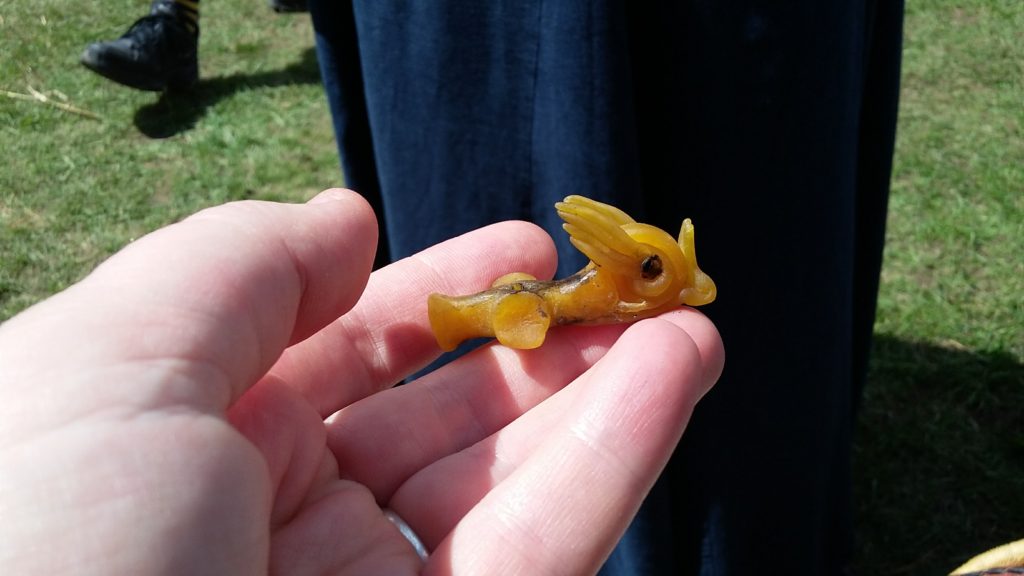Cedric of Thanet already had a coat that represented his recognitions as knight and laurel, and this cloak would also represent the pelican. I was given the opportunity to create the medallion to recognize his inclusion in the order. (It represents a true labor of love since string is not my thing and my lack of love for sewing is broadly known.)

The materials are wool, linen, cotton and metallic thread, and the ever-helpful wonder-under. The completed size is roughly four inches across. (In the photo, my leg is a good reference for size.)
The size was dictated by the existing white belt applique and embroidery. Sylvia du Vey provided size information and the green base that would be sewn to the cloak. The roundel uses a remnant of wool from the first dress I completed by hand (and which netted me the baronial A&S championship!) The green linen cloth is a remnant of my laurel elevation dress. The yellow beak and red blood drop were scavenged linen from one of the trilliums we had to remove from the cloak before we could add this. The chain stitch uses metallic threads (which are terrible to work with!) which bind it to the green base.

The design of the piece is inspired by English roof bosses, particularly one from Devon. I fell in love with the oak leaf motif for multiple reasons – it’s unique, our region has many oaks, and, especially, because Cedric has a leather oak leaf on his key chain — it was a site token for the first event for which I was the autocrat, I believe, an early Endewerade Hunt.
I wanted the piece to fall “outside” the roundel, and so included an extra oak and lengthened the tail of the pelican (which is longer in other roof boss examples.)
This is the inspiration work.

If one is seeking unique pelicans, looking at architectural detail provides some truly lovely examples that are not often seen in the SCA. I was delighted to find a few that I’ll consider should the need arise again for a similar project!




